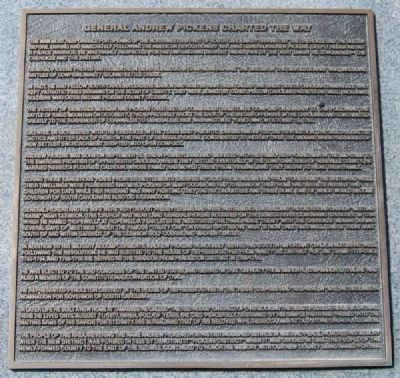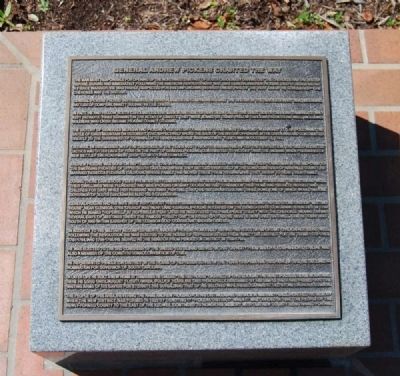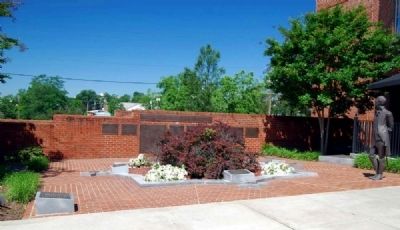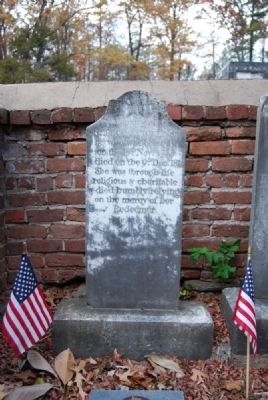Pickens in Pickens County, South Carolina — The American South (South Atlantic)
General Andrew Pickens Charted the Way
The man most responsible for opening up the northwestern part of South Carolina by driving out the Cherokee and the British, during and immediately following the American Revolution War, was General Andrew Pickens. deeply religious but a fierce warrior, he was highly respected for his unflinching bravery under fire by the very enemy he conquered - the Cherokee and the British.
General Pickens proved instrumental in several American campaigns against the British in the Revolutionary War, including battles of Cowpens, Ninety Six, and Kettle Creek.
In fact, he and fellow South Carolina leaders Marion and Sumter have been called the great South Carolina Triumvirate who kept patriotic fires burning on the altar of liberty. They were joined by other fellow Carolina patriots as well, including soldiers who later became Pickens County citizens.
The victory of Generals Morgan and Pickens over British Commander Tarleton at Cowpens in January 17, 1781 following the Battle of Kings Mountain on October 7, 1780, effectively broke the back of the British offensive in the Carolinas and contributed greatly to the surrender of Cornwallis to General George Washington at Yorktown on October 18, 1781.
Likewise, in skirmishes with the Cherokee in the years just prior to, during and after the Revolution, the skillful battle tactics and utter lack of fear on the part of General Pickens, contributed to victory over the Indians when pressures of new settler encroachment erupted into open conflict.
Andrew Pickens was born on September 19, 1739 in Pennsylvania and immigrated with his family as a young man in the mid-1700s to the emerging frontier of upper South Carolina, where they settled eventually in the Long Cane area of Abbeville County. He married Rebecca Fluoride Calhoun, whose family had moved there from Virginia, and they began to rear their family.
During those dangerous years frontier settlements endured attacks from Indians and from Tories and the British as well. Their dwellings were plundered and Mrs. Pickens on many occasions had to abandon their home and secrete herself and children for days while her husband was away fighting. They had six daughters and three sons, one of which would become governor of South Carolina as also did a grandson.
General Pickens and his wife were very devout Presbyterians and were instrumental in building the Old Stone Church "Meeting House" near Clemson. This church was near land General Pickens acquired on the Seneca River containing 575 acres in 1784 which he named "Hopewell." At Hopewell a year later he negotiated the final peace treaty with the Cherokee Indians during several days of meetings under the famous "Treaty Oak" on a high spot above what is now Lake Hartwell. This is today just south of and within earshot of the Clemson Golf Course and Madren Center.
In addition to his military accomplishment, Andrew Pickens honorable served his state in important civil capacities as well. Following the Revolution, he was elected to the House of Representatives from Ninety Six District for the terms 1778-1780, 1781-1784, and 1786-1788. He served as the senator from Pendleton District in 1780-1793.
He was elected to the 3rd Congress of the United States, and served in that capacity from March 4, 1795-March 13, 1795. He was also a member of the Constitutional Convention of 1790.
He represented Pendleton District in the House of Representatives in the years 1798-1800 and 1812-1814. He declined a nomination for Governor of South Carolina.
In late life he built a new home at Tamassee he called "The Red House" on a hilltop overlooking the beautiful Blue Ridge Mountains. Here he lived until August 11, 1817. when, full of years, he died peacefully, sustained by his simple faith and passed into the waiting arms of his savior for eternity. His burial, and that of his beloved wife, Rebecca, was at Old Stone Church, Clemson.
The people of this area, revering the name of Andrew Pickens, for his distinguished service in war and peace, honored his memory
when the new district was formed in 1828 by denoting it "Pickens District." When it was divided in 1868, the people of the newly-formed county to the east of the Keowee, continued to honor his memory with our new County being named for him.
Topics. This historical marker is listed in these topic lists: Patriots & Patriotism • Settlements & Settlers • War, US Revolutionary • Wars, US Indian. A significant historical month for this entry is January 1884.
Location. 34° 52.967′ N, 82° 42.4′ W. Marker is in Pickens, South Carolina, in Pickens County. Marker can be reached from Pendleton Street, 0.1 miles south of West Main Street. Marker is located near the south entrance of the Pickens County Courthouse. Touch for map. Marker is in this post office area: Pickens SC 29671, United States of America. Touch for directions.
Other nearby markers. At least 10 other markers are within walking distance of this marker. Pickens County Buffalo Soldiers (here, next to this marker); Pickens County Congressional Medal of Honor Memorial (here, next to this marker); To the Valiant Citizen-Soldiers of Pickens County (here, next to this marker); Major General Andrew Pickens (within shouting distance of this marker); Thomas Joab Mauldin (within shouting distance of this marker); Andrew Pickens (within shouting distance of this marker); John C. Calhoun (within
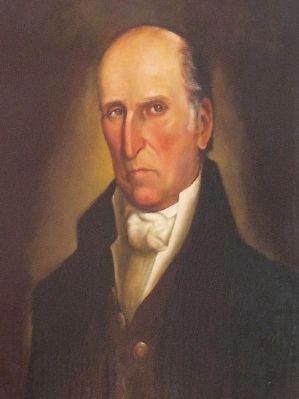
Photographed By Brian Scott
4. General Andrew Pickens (1739–1817)
Member of the South Carolina Senate from Pendleton District (1789-1793)
Member of the Third U.S. Congress (1793-1795)
Member of the South Carolina House of Representatives from Pendleton District (1798-1800, 1812-1814)
Also see . . .
1. Andrew Pickens. Andrew Pickens (September 13, 1739 – August 11, 1817) was a militia leader in the American Revolution and a member of the United States House of Representatives from South Carolina. (Submitted on June 17, 2009, by Brian Scott of Anderson, South Carolina.)
2. Battle of Cowpens. The Battle of Cowpens (January 17, 1781) was a decisive victory by American Revolutionary forces under Brigadier General Daniel Morgan, in the Southern campaign of the American Revolutionary War. (Submitted on June 17, 2009, by Brian Scott of Anderson, South Carolina.)
3. Siege of Ninety-Six. The Battle of Ninety Six was a siege in the American Revolutionary War between the American and British Colonist Tories. (Submitted on June 17, 2009, by Brian Scott of Anderson, South Carolina.)
4. Battle of Kettle Creek. The Battle of Kettle Creek was one of the most important battles of
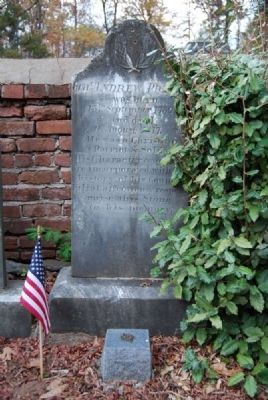
Photographed By Brian Scott, November 28, 2008
5. Tombstone for General Andrew Pickens
was born 13th September 1739,
and died
11th August 1817.
He was a Christian
a Patriot & Soldier.
His Character & age
are incorporated with
history of his County.
Filial affection & respect
raise this Stone
to his memory.
5. Battle of Kings Mountain. The Battle of Kings Mountain, October 7, 1780, was a decisive Patriot victory in the Southern campaign of the American Revolutionary War. (Submitted on June 17, 2009, by Brian Scott of Anderson, South Carolina.)
6. Cherokee. The Cherokee are a Native American people originally from the Southeastern United States (Alabama, Georgia, Kentucky, North Carolina, South Carolina, Tennessee, and Virginia). (Submitted on June 17, 2009, by Brian Scott of Anderson, South Carolina.)
Additional commentary.
1. About Andrew Pickens (1739 - 1817)
Pickens, Andrew, (grandfather of Francis Wilkinson Pickens), a Representative from South Carolina; born in Paxton, Bucks County, Pa., September 13, 1739; attended the common schools; moved with his parents to the Waxhaw settlement in South Carolina in 1752; served in the provincial militia in the campaign against the Cherokee Indians in 1760; entered the Revolutionary Army as captain of militia and attained the rank of brigadier general; commanded an expedition against the Cherokee Indians in 1782; member of the state house of representatives 1781-1794;
one of the commissioners named to settle the boundary line between South Carolina and Georgia in 1787; member of the state constitutional convention in 1790; elected as an Anti-Administration candidate to the Third Congress (March 4, 1793-March 3, 1795); appointed major general of militia in 1795; unsuccessful candidate for election to the United States Senate in 1797; member of the state house of representatives 1800-1812; declined the nomination for governor in 1812; died in Tomassee, Pendleton District, S.C., August 11, 1817; interment in Old Stone Churchyard, near Pendleton, S.C. (Source: Biographical Directory of the U.S. Congress)
— Submitted June 17, 2009, by Brian Scott of Anderson, South Carolina.
Credits. This page was last revised on November 23, 2020. It was originally submitted on June 17, 2009, by Brian Scott of Anderson, South Carolina. This page has been viewed 1,860 times since then and 19 times this year. Photos: 1, 2, 3, 4, 5, 6. submitted on June 17, 2009, by Brian Scott of Anderson, South Carolina.
